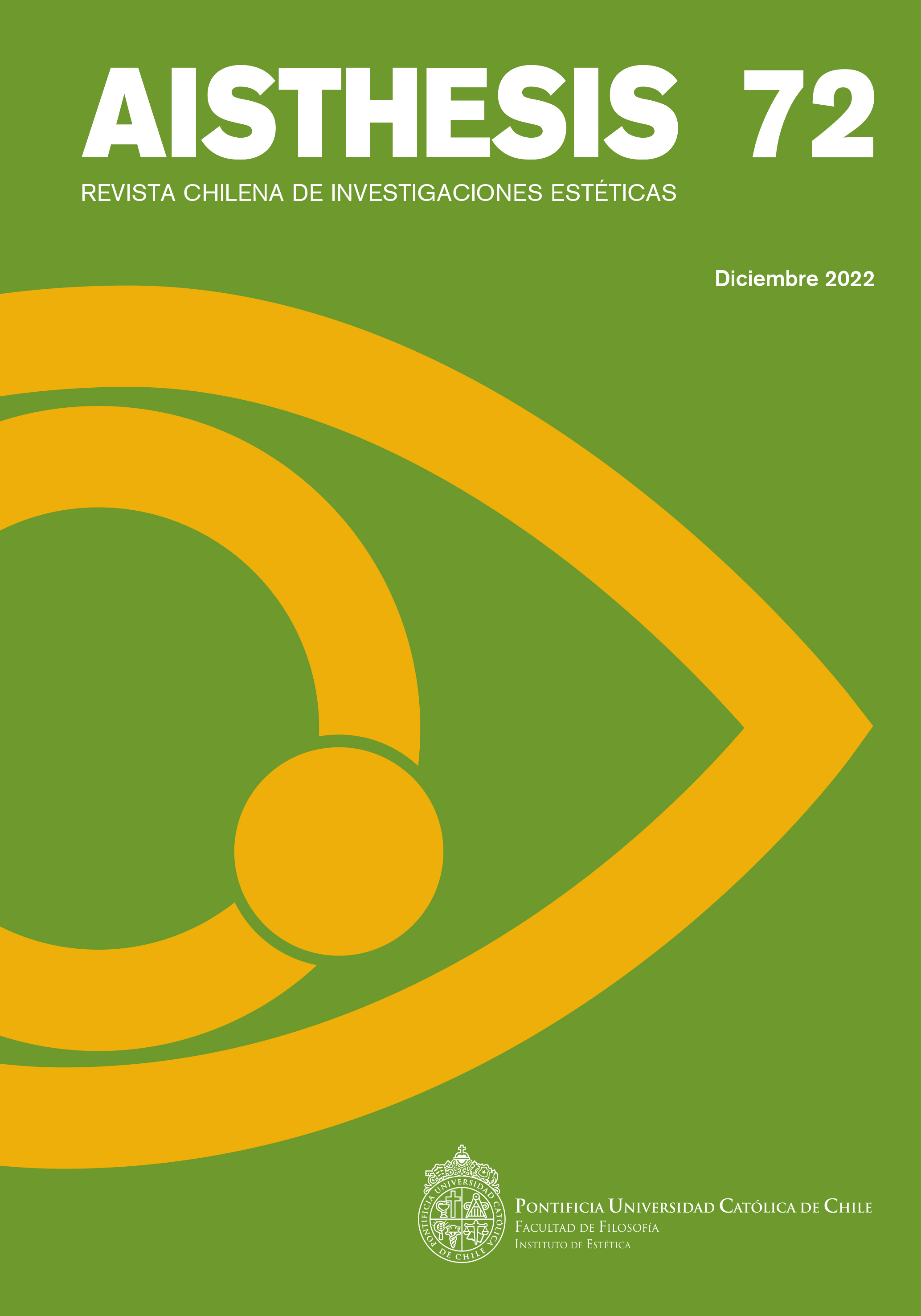The Plague in Ceppaloni by Clorindo Testa Immersions into a Drawn Myth
Main Article Content
Abstract
This article proposes an amplified interpretation of the series untitled The Plague in Ceppaloni (1977-1997) by the Italian-Argentine artist-architect Clorindo Testa. This series contains a set of maps, drawings and murals that works around the incidence of ecological problems in the human condition and habitat. The text raises in its development a triple approach to the work: the visual narrative, the archaeological and the anthropological. We decode the drawn myth structure that develops in the Middle Ages of the Italian city of Ceppaloni where the Testa comes from, and the role of its protagonists: rodents, “spreaders”, the architect himself, the medieval town, and its castle, as well as the itinerary of the Black Death during the 14th century. This author recovers the artistic idea of figuration in his work, and the idea of humanism too. In his creative manifesto, art, architecture, and ecology coexist. In this series, Testa combines the popular and the erudite with multiple techniques. The resulting synthesis is part of the imaginary of society. The two versions of the work —the plague and the ecological deterioration— coexist currently, and for this reason, its revision is a suggestive kind of exaltation of the present.
Downloads
Article Details

This work is licensed under a Creative Commons Attribution-NonCommercial-ShareAlike 4.0 International License.
All contents of this electronic edition are distributed under the Creative Commons license of "Attribución-shareAlike 4.0 Internacional" (CC-BY-SA). Any total or partial reproduction of the material must mention its origin.
The rights of academic works published in this publication belong to their authors., who grant to AISTHESIS: Revista Chilena de Investigaciones Estéticas the license for its use. The management of the permits and the authorization of the publication of the images (or of any material) that contains copyright and its consequent rights of reproduction in this publication is the sole responsibility of the authors of the articles
References
Boccaccio, G. (1990). Decameron. Madrid: Siruela, 17-18.
Camus, A. (2002). La Peste. Barcelona: Edhasa.
Cartier, M. (1978). El Arte Ecológico. Material de prensa de La Galería, Buenos Aires. https://www.galeriajacquesmartinez.com/es/events/55/la-peste-en-ceppaloni
Gargantilla, P. (2018). La peste. La epidemia que mantuvo en jaque a Europa. Clío. Revista de historia 197, 20-27.
Testa, C. (1978) Multiplicidades de Clorindo Testa. La Peste como motivo visual. La Opinión.
Testa, C. (1991) La serie de la Peste. Ruth Bezacar. Galería de Arte. Feria internacional de Arte Contemporáneo ARCO: Madrid.
Dwyer, J. (2017) The dawning of environmental consciousness in the United States during the 1960s.
Elders, F. (1974). La naturaleza humana: justicia versus poder. Un debate. Noam Chomsky y Michel Foucault. Katz, Buenos Aires.
Fontán, M. (2016). Lo nunca antes visto. Madrid: Fundación Juan March.
Giménez, C. (2019). El arquitecto-artista y su biógrafo crítico. Clorindo Testa y Jorge Glusberg: una relación perdurable. Instituto de Arte Americano e Investigaciones Estéticas, Seminario de Crítica, 231.
Glusberg, J. (1978). Clorindo Testa. La peste en Ceppaloni. Buenos Aires: Centro de arte y comunicación.
Glusberg, J. (1998). El fin de siglo en una mordaz parábola de Clorindo Testa.
Guardiola, I. (2019). El superávit visual. El Mundo. 15/03/2019.
Leporini, N. (2015). The Transculturation of Mythic Archetypes: Margaret Atwood’s Circe. Amaltea. Revista De mitocrítica, 7, 37-55. https://doi.org/10.5209/rev_AMAL.2015.v7.48348
Linares, M. (2000). Europa después de la lluvia. El Cultural < https://elcultural.com/Max-Ernst> [última consulta el 12/02/2021].
Lozano, M. (1987). Las paráfrasis plásticas de Wolf Vostell. Los Barruecos 51, 251-276.
Marcos, M. (2017). Apolo y Dionisos en la arquitectura argentina. En Revista de arquitectura. Museo de Arquitectura y Diseño de la Sociedad Central de Arquitectos, 113 (259), Buenos Aires.
Redfield, Robert. (1960) The Little Community and Peasant Society and Culture. The University of Chicago Press, Chicago.
R.M-C. (1978). El visitante inexorable.
Traba, Marta. (1999) Conversación al sur. Madrid: Siglo XXI.
Un arquitecto múltiple. La peste como motivo visual (s.f.). La Opinión.
Whitelow, G. (1964) Tres aspectos de la pintura argentina actual. En Pintura argentina. Exh. cat.: Rosario.
